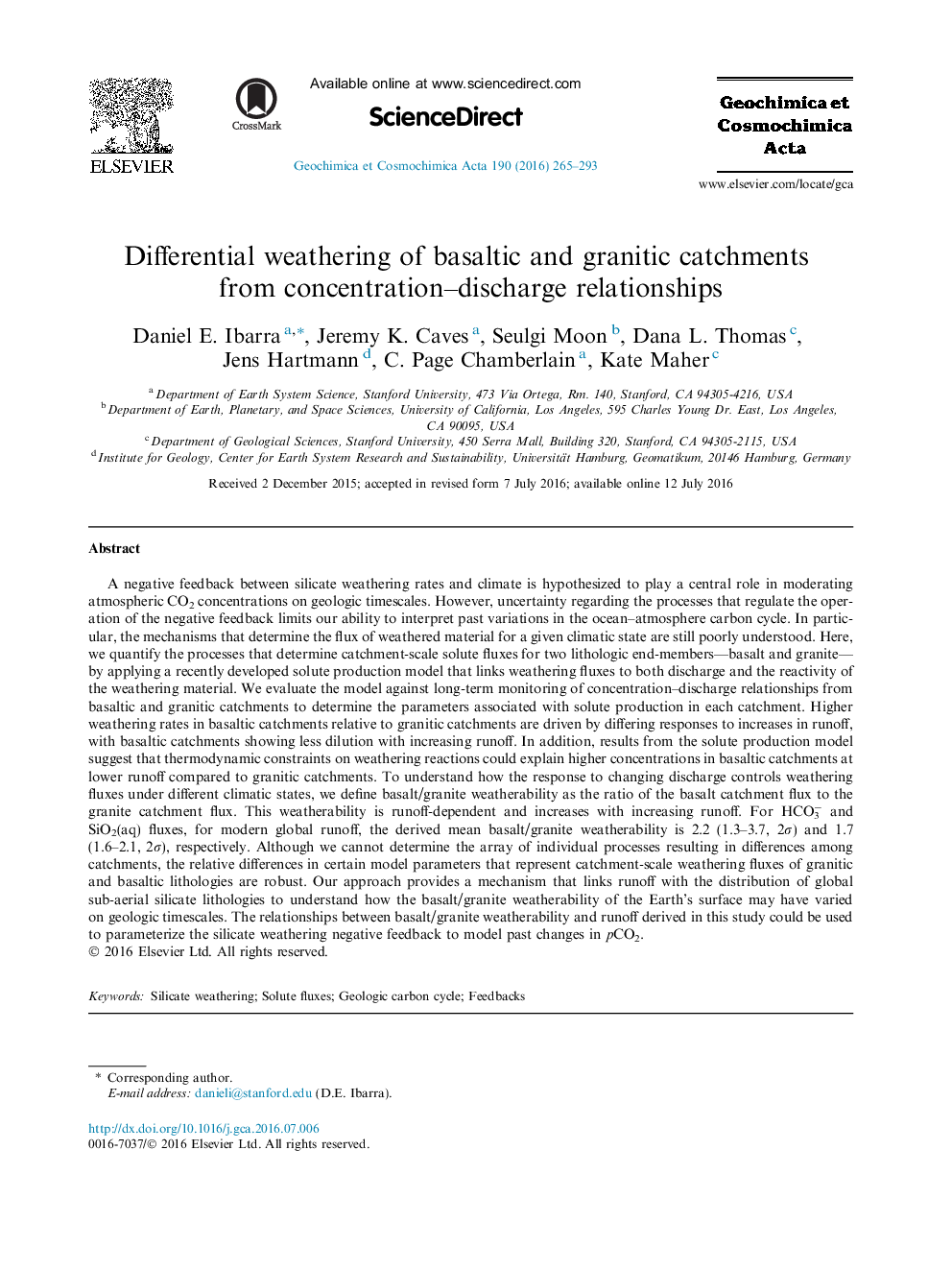| Article ID | Journal | Published Year | Pages | File Type |
|---|---|---|---|---|
| 4701753 | Geochimica et Cosmochimica Acta | 2016 | 29 Pages |
A negative feedback between silicate weathering rates and climate is hypothesized to play a central role in moderating atmospheric CO2 concentrations on geologic timescales. However, uncertainty regarding the processes that regulate the operation of the negative feedback limits our ability to interpret past variations in the ocean–atmosphere carbon cycle. In particular, the mechanisms that determine the flux of weathered material for a given climatic state are still poorly understood. Here, we quantify the processes that determine catchment-scale solute fluxes for two lithologic end-members—basalt and granite—by applying a recently developed solute production model that links weathering fluxes to both discharge and the reactivity of the weathering material. We evaluate the model against long-term monitoring of concentration–discharge relationships from basaltic and granitic catchments to determine the parameters associated with solute production in each catchment. Higher weathering rates in basaltic catchments relative to granitic catchments are driven by differing responses to increases in runoff, with basaltic catchments showing less dilution with increasing runoff. In addition, results from the solute production model suggest that thermodynamic constraints on weathering reactions could explain higher concentrations in basaltic catchments at lower runoff compared to granitic catchments. To understand how the response to changing discharge controls weathering fluxes under different climatic states, we define basalt/granite weatherability as the ratio of the basalt catchment flux to the granite catchment flux. This weatherability is runoff-dependent and increases with increasing runoff. For HCO3− and SiO2(aq) fluxes, for modern global runoff, the derived mean basalt/granite weatherability is 2.2 (1.3–3.7, 2σ) and 1.7 (1.6–2.1, 2σ), respectively. Although we cannot determine the array of individual processes resulting in differences among catchments, the relative differences in certain model parameters that represent catchment-scale weathering fluxes of granitic and basaltic lithologies are robust. Our approach provides a mechanism that links runoff with the distribution of global sub-aerial silicate lithologies to understand how the basalt/granite weatherability of the Earth’s surface may have varied on geologic timescales. The relationships between basalt/granite weatherability and runoff derived in this study could be used to parameterize the silicate weathering negative feedback to model past changes in pCO2.
